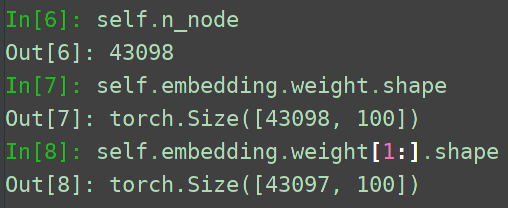This is the code for the AAAI 2019 Paper: Session-based Recommendation with Graph Neural Networks. We have implemented our methods in both Tensorflow and Pytorch.
Here are two datasets we used in our paper. After downloaded the datasets, you can put them in the folder datasets/:
-
YOOCHOOSE: http://2015.recsyschallenge.com/challenge.html or https://www.kaggle.com/chadgostopp/recsys-challenge-2015
-
DIGINETICA: http://cikm2016.cs.iupui.edu/cikm-cup or https://competitions.codalab.org/competitions/11161
There is a small dataset sample included in the folder datasets/, which can be used to test the correctness of the code.
We have also written a blog explaining the paper.
You need to run the file datasets/preprocess.py first to preprocess the data.
For example: cd datasets; python preprocess.py --dataset=sample
usage: preprocess.py [-h] [--dataset DATASET]
optional arguments:
-h, --help show this help message and exit
--dataset DATASET dataset name: diginetica/yoochoose/sampleThen you can run the file pytorch_code/main.py or tensorflow_code/main.py to train the model.
For example: cd pytorch_code; python main.py --dataset=sample
You can add the suffix --nonhybrid to use the global preference of a session graph to recommend instead of the hybrid preference.
You can also change other parameters according to the usage:
usage: main.py [-h] [--dataset DATASET] [--batchSize BATCHSIZE]
[--hiddenSize HIDDENSIZE] [--epoch EPOCH] [--lr LR]
[--lr_dc LR_DC] [--lr_dc_step LR_DC_STEP] [--l2 L2]
[--step STEP] [--patience PATIENCE] [--nonhybrid]
[--validation] [--valid_portion VALID_PORTION]
optional arguments:
-h, --help show this help message and exit
--dataset DATASET dataset name:
diginetica/yoochoose1_4/yoochoose1_64/sample
--batchSize BATCHSIZE
input batch size
--hiddenSize HIDDENSIZE
hidden state size
--epoch EPOCH the number of epochs to train for
--lr LR learning rate
--lr_dc LR_DC learning rate decay rate
--lr_dc_step LR_DC_STEP
the number of epochs after which the learning rate
decay
--l2 L2 l2 penalty
--step STEP gnn propogation steps
--patience PATIENCE the number of epoch to wait before early stop
--nonhybrid only use the global preference to predict
--validation validation
--valid_portion VALID_PORTION
split the portion of training set as validation set- Python 3
- PyTorch 0.4.0 or Tensorflow 1.9.0
There are other implementation available for reference:
- Implementation based on PaddlePaddle by Baidu [Link]
- Implementation based on PyTorch Geometric [Link]
- Another implementation based on Tensorflow [Link]
- Yet another implementation based on Tensorflow [Link]
Please cite our paper if you use the code:
@inproceedings{Wu:2019ke,
title = {{Session-based Recommendation with Graph Neural Networks}},
author = {Wu, Shu and Tang, Yuyuan and Zhu, Yanqiao and Wang, Liang and Xie, Xing and Tan, Tieniu},
year = 2019,
booktitle = {Proceedings of the Twenty-Third AAAI Conference on Artificial Intelligence},
location = {Honolulu, HI, USA},
month = jul,
volume = 33,
number = 1,
series = {AAAI '19},
pages = {346--353},
url = {https://aaai.org/ojs/index.php/AAAI/article/view/3804},
doi = {10.1609/aaai.v33i01.3301346},
editor = {Pascal Van Hentenryck and Zhi-Hua Zhou},
}










